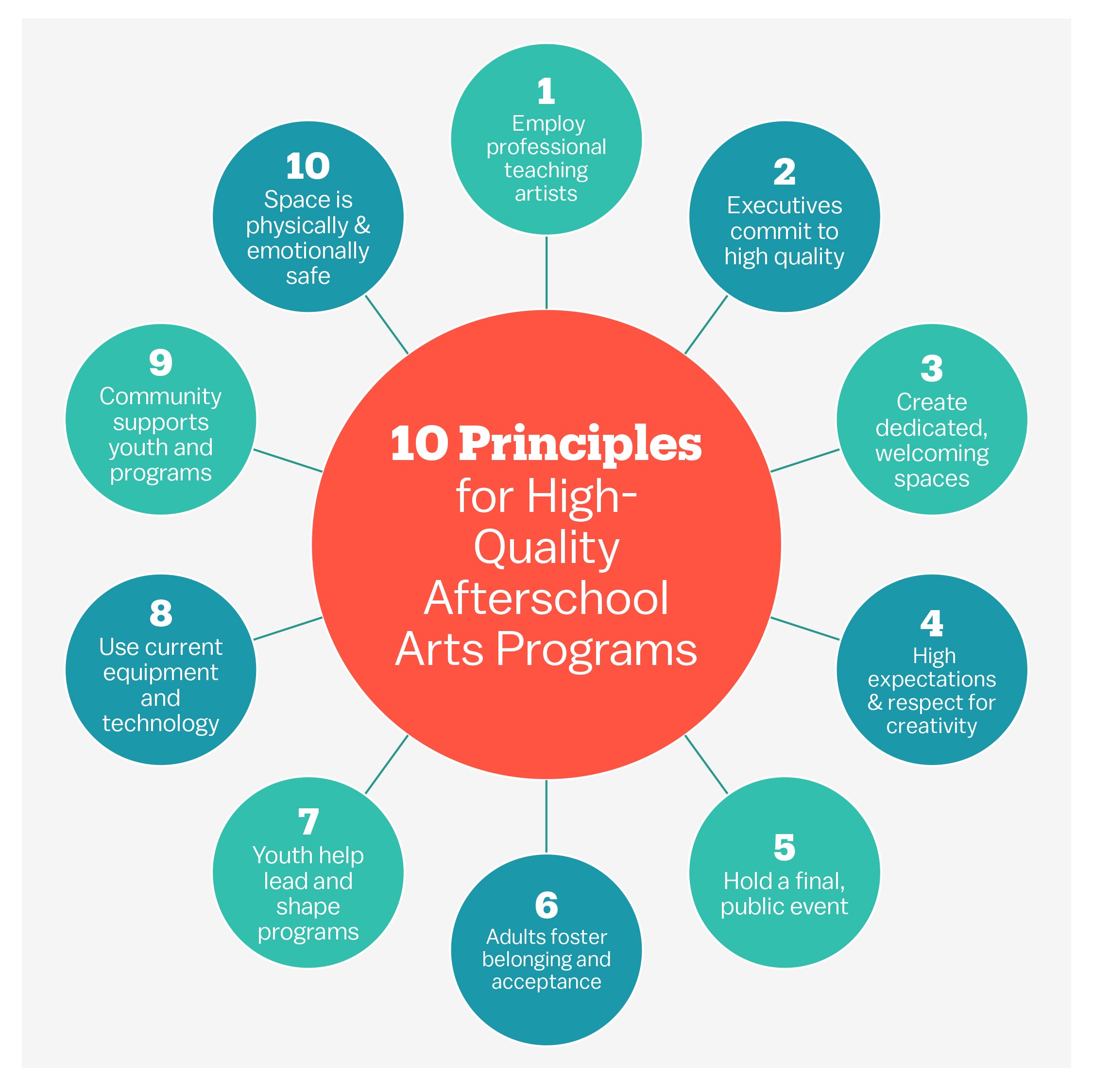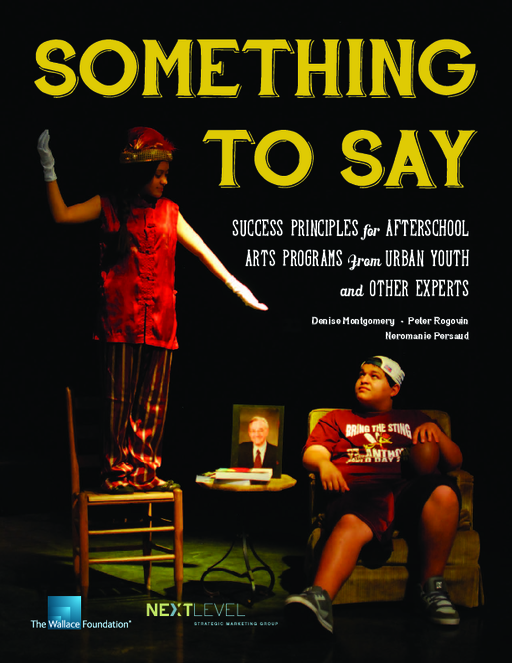Breadcrumb
- Wallace
- Reports
- Something To Say Success Princip...
Something to Say
Success Principles for Afterschool Arts Programs From Urban Youth and Other Experts
- Author(s)
- Denise Montgomery, Peter Rogovin, and Neromanie Persaud
- Publisher(s)
- The Wallace Foundation
Summary
How we did this
Researchers conducted interviews with more than 200 students from low-income households (ages 10 to 13), their families, directors of successful programs, and youth arts education experts, and gathered insights from 48 successful programs. They analyzed more than 100 literature sources and interviewed 22 key opinion leaders to identify the top 10 traits of high-quality arts programs.
Arts experiences, especially creating art, can help young people gain new perspectives, deepen empathy, and perhaps even do better in school. But it can be difficult to get students to engage in afterschool arts programs. This is especially true for young people from low-income, urban communities.
This study looks at how arts programs can attract and retain tweens (ages 10-13) who are growing up in under-resourced communities. It also compares experts' recommendations for what these young people need in an arts program to what the tweens say they want.
The report applies a consumer marketing lens. It views students as potential customers to see how they might become regular “arts consumers.”
The researchers were guided by three questions:
- How can young people from low-income, urban communities get equal access to high-quality arts programs?
- Is there a set of effective practices organizations can use to foster these young people’s participation in high-quality arts programs?
- How do youth preferences for arts programs compare with experts’ recommendations on what they need from arts programs?
The research team interviewed more than 200 students from low-income households, their families, directors of successful programs, and youth arts education experts to explore these questions. The report is based on these conversations and review of relevant literature. It identifies several features that tweens said they would like to see in arts programs, including:
- Professional artists as teachers
- Hands-on learning
- The ability to shape the programming
- Dedicated spaces for creating and practicing art
- Opportunity to build friendships and connections with others who have the same interests
- Large public events to showcase their art
These and other findings led to a variety of best practices, including 10 principles for developing effective, high-quality afterschool arts programming.
The researchers note several barriers that might keep youth from participating in arts programs. Among them are negative past experiences with the arts and fear of judgment from other students. Another barrier is a belief that “the arts” refers only to visual arts like painting. This excludes a range of possibilities that some tweens find more appealing, from dancing to digital media. Students might also lose interest if a program is overly structured or if they fear they will not enjoy or succeed in the program.
Key Takeways
- This report identifies 10 principles of high-quality arts programs, including a culture of high expectations; positive relationships with peers and adults; instruction from professional teaching artists; a commitment to high-quality arts through action; and dedicated art spaces.
- Youth want teaching from professional artists, inspiring spaces, opportunities to make friends, opportunities to present their art, and participation incentives like snacks and t-shirts.
- Students’ preferences for arts programs matched up with what experts recommended.
- Student interest in afterschool arts programs is constrained if they see a narrow view of the "arts," lack parental encouragement, face negative peer pressure, or have concerns about their enjoyment of, or success in, the arts.
- Programs have a number of ways to encourage student attendance. These include making clear that “the arts” refers to many different art forms and creating a welcoming environment for young people.
Visualizations

Hear from the Experts
Learn About the Programs
Materials & Downloads
What We Don't Know
- How can large, multidisciplinary community organizations use the 10 principles of high-quality arts programs to shape their arts programming?
- Do the principles of high-quality arts programming have a place in arts instruction in schools?
- Do the principles apply just to tweens? Or do they apply to teenagers and children, too?













